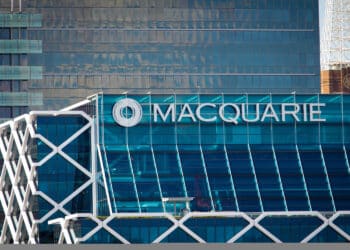The group’s London-based markets research analyst, Ian Samson, said US tariffs of 25 per cent on Chinese goods will “somewhat” dent China’s growth prospects and provide a small one-off boost to US inflation.
“The US has slapped a 10 per cent tariff on US$200 billion of Chinese goods, threatening to increase this to 25 per cent in 2019 in the absence of a trade deal. Meanwhile, China retaliated with its own levies of up to 10 per cent on US$60 billion of US imports,” Mr Samson said.
“We estimate the measures will lop 0.6 per cent off Chinese growth in 2019, assuming the US implements the higher 25 per cent tariff. This alone is not a significant cause for concern, but it will add to China’s ingrained slowdown following the clampdown on the shadow banking sector and the loss of infrastructure stimulus as a growth driver.”
However, Fidelity sees falling infrastructure investment growth as more concerning than tariffs on exports to the US, which make up less than 4 per cent of the economy.
Mr Samson noted that investment in infrastructure had grown at around 20 per cenrt annually between 2013 and 2017, before plummeting this year into contractionary territory.
“However, the tariffs could exacerbate China’s current account deficit,” he said.
“The country has been running a US$35 billion annualised deficit in the first half this year, following decades of surplus. A quick estimate would have this rising to US$135 billion (around 1 per cent of GDP) as a result of the new tariffs, although this could be less if China manages to redirect these ‘lost’ exports to countries other than the US.
“This would put more pressure on the renminbi, which we don’t think is priced in. That said, Beijing ultimately maintains a lot of control over the currency through capital controls, so we don’t expect any disorderly price moves. Overall, we expect China to continue with its relatively minor easing measures seen of late, as much for domestic reasons as for tariff concerns.”
Mr Samson said the the impact of the tariffs on the US should be small, but the transmission channels may be unpredictable and could well surprise.
“Still, the tariffs don’t do much to change our base case for how the US economy will progress. Another year of counter-cyclical fiscal stimulus will keep growth above trend until late 2019, when the fiscal impulse turns into a drag.”
“We’ve seen estimates that the tariffs will provide a boost to US inflation of between eight and 30 basis points. This will be a one-off, which the US Federal Reserve would almost certainly look through and not adjust its rate path in response.”







